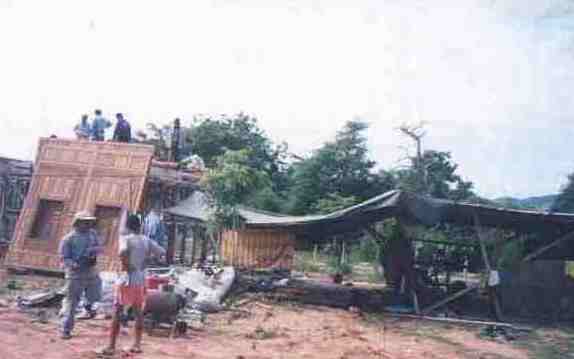
| |
Understanding Thai propertyWhile about 3 times more expensive than a concrete house, a teak house is probably a better investment over time. Traditionally Thais built their houses out of natural materials that they got for free from the forest. After a couple of years or so the house had fallen to pieces or been eaten by insects and they just built another one. This approach to property development still pertains even in the era of concrete and steel. Thais build houses cheaply to poor standards and then knock them down after a few years and build a new one. There is little point in building a high quality house, as Thais dislike living in an old house. They don't like old things generally. This has something to do with their religious beliefs concerning the presence of spirits in a house.
Land rather than property is where the money is in Thailand. The land on which a house is standing is probably worth 3 times what the house is worth. This is also the result of living in a tropical climate. The psychology in different. Apart from shelter from the rain during the 3 months of the monsoon and protection from mosquitoes, one doesn't actually need a house. Unless you are going to sell it to foreigners, there is little point in spending a lot on a house, if you looking at in as an investment. Trying to find a contractor who will build to a high quality is difficult The resale value of houses in Thailand is poor. Even with the booming property market there are houses of reasonable quality that have been on sale for years. A traditional teak house, on the other hand, will retain its value over the years. This is in part because of the soaring price of teak. Teak is slow growing and only trees over 200 years old can be used to make traditional houses; the teak forests are dwindling while the demand for the wood in rising. Over the last 30 years traditional teak houses have increased in price at a rate of around 13% a year. Property CycleA popular theory at the moment is that property moves in an 18 year cyle: 14 years up and 4 years down. There is a certain logic behind this in that after a decade people forget about the last crash and become more reckless in taking on debt. The debt levels become excessive and a crash results. Applying this theory to the Thailand, the market crashed in 1997, which was followed by 4 years of decline until 2001, and the market will continue to rise until 2015 when there will be a crash. The largest gains come in the years just preceding the crash.
|
